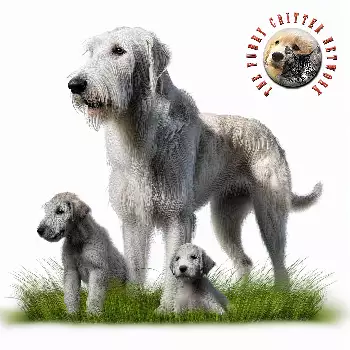The Cu Faoil stands as one of the most ancient and legendary dog breeds in the world, carrying names and titles that echo through more than two thousand years of recorded history across Celtic lands and beyond. This magnificent giant hound bears designations that reflect its noble heritage, its practical purpose, and the reverence with which Irish people have regarded these dogs since ancient times.
The name Cu Faoil itself represents the ancient Gaelic designation for this breed, combining the elements cú meaning hound and faoil meaning wolf. This linguistic construction directly references the breed's primary historical purpose as a hunter of wolves, a task at which these powerful sighthounds excelled for centuries. The pronunciation approximates koo feel, though regional variations exist throughout Ireland and among Irish speakers worldwide.
The modern English designation Irish Wolfhound has become the breed's official registered name with kennel clubs worldwide, clearly stating both the breed's country of origin and its historic function. This name gained prominence during the nineteenth-century revival of the breed and has since become the standard designation in English-speaking countries and international canine organizations.
Historical records document numerous alternative names used for these great hounds throughout the centuries. The Latin designation Canes Scotici, meaning Scottish dogs, appears in Roman writings from the fourth century, reflecting the Roman understanding that the Scoti were the Gaelic peoples regardless of geographic location. Roman Consul Quintus Aurelius Symmachus used this term when describing seven of these impressive hounds sent to Rome as gifts in 391 AD.
The term Irish Greyhound appears frequently in historical documents, reflecting the breed's classification among the larger family of sighthounds who hunt by speed and vision rather than scent. This designation emphasized the hound's coursing abilities while acknowledging its Irish origins. Some historians used this name interchangeably with Irish Wolfhound until the breed's nineteenth-century revival established clearer terminology.
Another historical name, Great Dog of Ireland, appears in various accounts praising the breed's exceptional size and presence. This designation emphasized the awe-inspiring stature that caused Roman spectators to view these dogs with wonder and that continues to impress observers today. The term captured the essence of a breed whose physical presence alone commanded attention and respect.
The prefix cú held profound significance in ancient Irish culture, appearing in the names of legendary heroes and warriors as an honorific denoting valor and loyalty comparable to the great hounds. The most famous example is Cú Chulainn, Ireland's greatest mythological hero, whose name means Hound of Culann. This naming tradition reflects the extraordinary esteem in which the Irish held their great hounds.
Recognition of the Cu Faoil by international kennel organizations reflects its status as one of the world's most distinguished dog breeds. The American Kennel Club recognized the Irish Wolfhound in 1897, placing it in the Hound Group where it remains today. The breed ranks among the AKC's oldest recognized breeds, reflecting its established presence in America during the organization's early years.
The United Kennel Club recognized the Irish Wolfhound in 1914, also classifying it within the sighthound category alongside other coursing breeds. The Kennel Club of the United Kingdom, which played a crucial role in the breed's nineteenth-century revival, maintains registration and shows for the breed within its Hound Group. The Fédération Cynologique Internationale classifies the Irish Wolfhound in Group 10 as a rough-haired sighthound.
The Irish Wolfhound Club of America, founded in 1927, serves as the parent club for the breed in the United States, maintaining the breed standard and promoting responsible ownership and breeding. Similar breed clubs operate worldwide, including the Irish Wolfhound Club of Ireland, the Irish Wolfhound Club in the United Kingdom, and organizations throughout Europe, Australia, and other regions where the breed has established presence.
Ireland itself maintains a special relationship with this breed, which many consider the country's national dog despite no official designation. The Irish Wolfhound appears on Irish currency, official seals, and cultural symbols, representing the nation's Celtic heritage and the legendary status these hounds achieved in Irish history and mythology.

